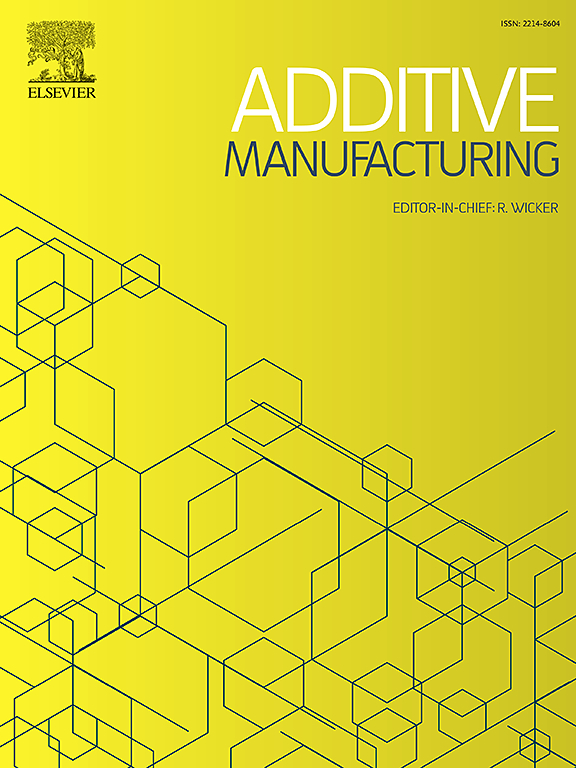Influence of interface on microstructure and mechanical properties of laser-direct energy deposited Ti60 alloy
IF 10.3
1区 工程技术
Q1 ENGINEERING, MANUFACTURING
引用次数: 0
Abstract
In this study, the laser-direct energy deposition (L-DED) was employed to fabricate Ti60 structures on the wrought Ti60 substrate. Detailed microstructure characterization and mechanical behavior investigation of the deposited material and substrate material were carried out. The parameter of the improved indentation inversion algorithm was optimized to obtain local elastoplastic properties of the interface between deposition and substrate. Quantitative analyses show that the interface exhibits improved mechanical properties compared to the wrought substrate. The theoretical strengthening models confirms that by introducing overall α texture and acicular α/α′ in deposited zone and heat-affected zone, additional grain boundary strengthening is achieved by reducing the effective grain size, while simultaneously achieving additional dislocation strengthening when compared to the substrate zone. For the sample which has both deposited material and substrate, the yield and fracture stresses are determined by the strength of the wrought substrate. The over-matching between the deposited zone with higher strength and the substrate zone does not compromise the overall structural strength.
界面对激光直接能量沉积 Ti60 合金微观结构和机械性能的影响
本研究采用激光直接能量沉积(L-DED)技术在锻造的 Ti60 基材上制造 Ti60 结构。对沉积材料和基底材料进行了详细的微观结构表征和力学行为研究。对改进的压痕反演算法参数进行了优化,以获得沉积和基底之间界面的局部弹塑性。定量分析显示,与锻造基材相比,界面的机械性能有所提高。理论强化模型证实,通过在沉积区和热影响区引入整体α纹理和针状α/α′,通过减小有效晶粒尺寸实现了额外的晶界强化,同时与基底区相比实现了额外的位错强化。对于既有沉积材料又有基体的样品,屈服应力和断裂应力由锻造基体的强度决定。强度较高的沉积区与基底区之间的过度匹配不会影响整体结构强度。
本文章由计算机程序翻译,如有差异,请以英文原文为准。
求助全文
约1分钟内获得全文
求助全文
来源期刊

Additive manufacturing
Materials Science-General Materials Science
CiteScore
19.80
自引率
12.70%
发文量
648
审稿时长
35 days
期刊介绍:
Additive Manufacturing stands as a peer-reviewed journal dedicated to delivering high-quality research papers and reviews in the field of additive manufacturing, serving both academia and industry leaders. The journal's objective is to recognize the innovative essence of additive manufacturing and its diverse applications, providing a comprehensive overview of current developments and future prospects.
The transformative potential of additive manufacturing technologies in product design and manufacturing is poised to disrupt traditional approaches. In response to this paradigm shift, a distinctive and comprehensive publication outlet was essential. Additive Manufacturing fulfills this need, offering a platform for engineers, materials scientists, and practitioners across academia and various industries to document and share innovations in these evolving technologies.
 求助内容:
求助内容: 应助结果提醒方式:
应助结果提醒方式:


